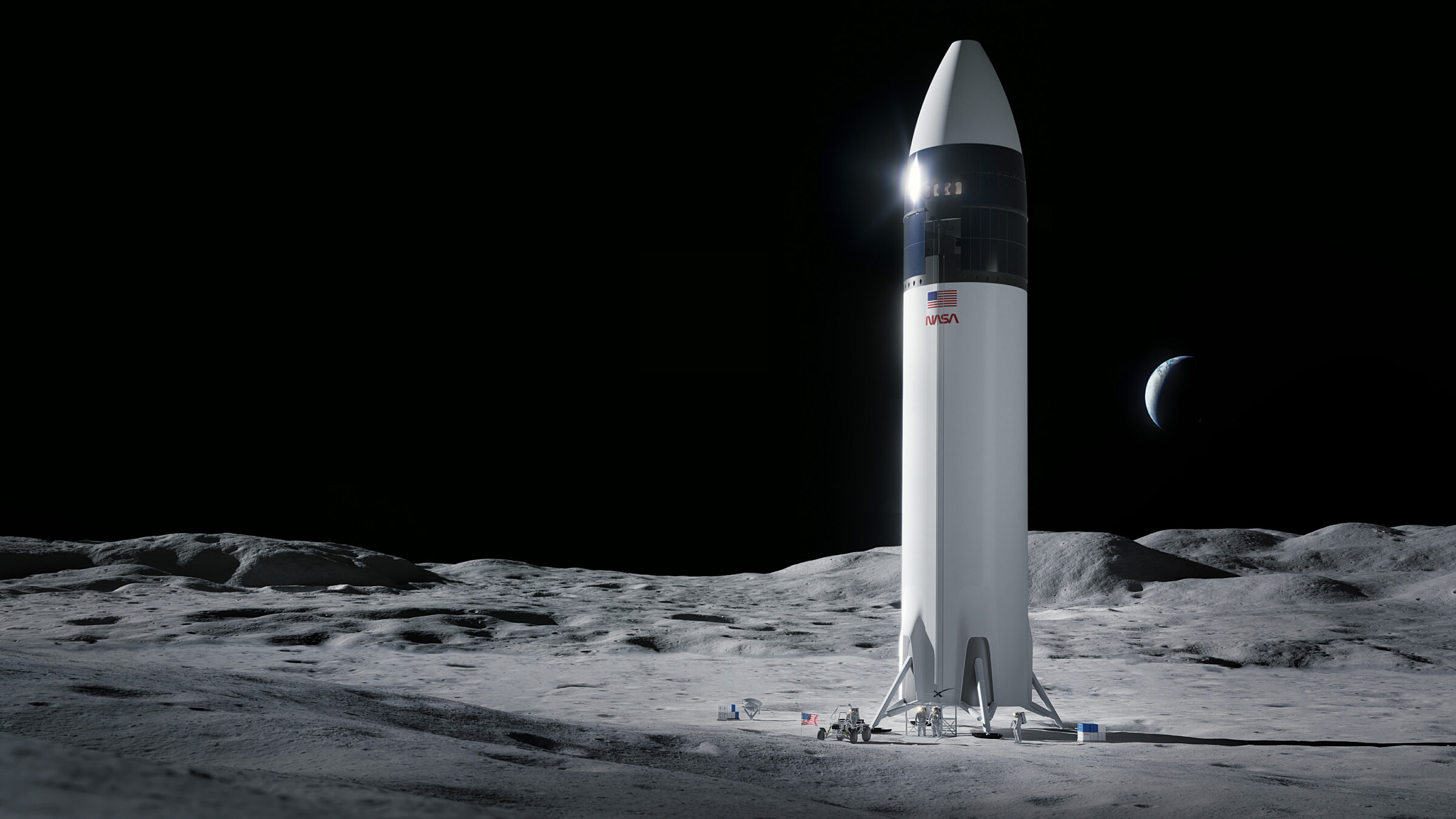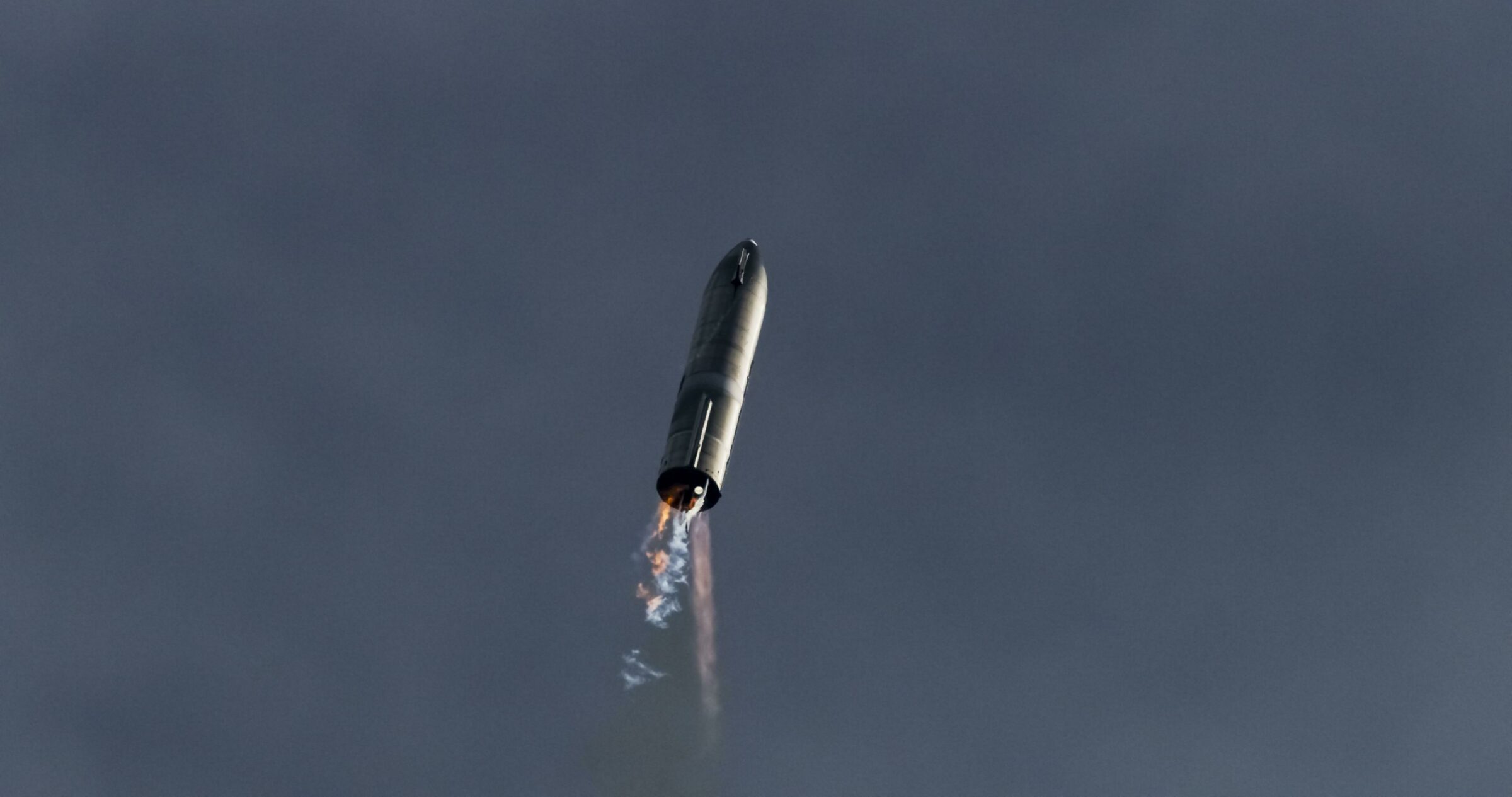Casey Dreier & Jason Davis • Apr 20, 2021
Why NASA Picked SpaceX to Land Humans on the Moon
And How the Decision Will Help Humans Land on Mars
NASA last week announced it selected SpaceX’s Starship to land humans on the Moon as part of the agency’s Artemis program. To develop Starship for the Moon, NASA will pay no more than $2.9 billion to SpaceX over the next few years, money that will be matched and possibly exceeded by funds from SpaceX itself.
Under the terms of the award, SpaceX will fly Starship to the lunar surface without a crew at least once before transporting astronauts. NASA says there is still a chance that mission could happen in 2024, although the agency is currently conducting a review of the entire Aretmis program.
Investing in Starship will help NASA return to the Moon, but it will also do something more consequential. Starship is a Mars ship. By choosing Starship for the Moon, NASA is investing in the Starship program itself, providing SpaceX with a cash infusion for the same technology and systems it needs to get to the Red Planet—a true “Moon-to-Mars” strategy if there ever was one.
This decision is not without risk: NASA previously selected at least two companies to provide commercial cargo and crew services to the International Space Station in order to preserve competition, control cost, and ensure redundancy. By selecting only SpaceX, NASA is putting all its eggs in one basket.
But SpaceX has previously delivered on its NASA contracts. In the past 20 years they have grown from a small startup to the world’s premier aerospace company, launching cargo and astronauts at a pace commensurate with national space agencies. NASA now places the lives of its astronauts in the hands of SpaceX to reach the ISS, relies on the company to supply the space station, and places its precious scientific missions atop their rockets.
If Starship succeeds in returning humans to the lunar surface, it will be the ultimate vindication of the public-private partnership model. NASA will gain a lunar lander at a fraction of the cost of the Apollo-era Lunar Module, and SpaceX—a private entity—would gain independent access to the lunar surface, a locale previously the domain of a single nation.
And in the same fell swoop, both organizations would step toward Mars.

The Background
Humans have not traveled beyond Earth orbit since the Apollo program ended in 1972. NASA has officially been trying to change that since 2004, when President George W. Bush announced what became the agency’s back-to-the-Moon Constellation program.
In 2010, the Obama administration canceled Constellation, but two key pieces of the program survived: the Orion crew capsule and a rocket that became what is now the Space Launch System, or SLS. Both vehicles are being developed using classic “cost-plus” contracting, where NASA pays for the full cost of development, even if costs rise far above initial estimates.
NASA’s Artemis program will use the SLS to blast astronauts to lunar orbit aboard Orion, where they will meet up with a previously-emplaced lunar lander to travel to the surface and back. Orion in the future will also dock with the Gateway, a small space station in lunar orbit. From there, astronauts can conduct science and transfer to lunar landers.
Rather than building a lunar lander in-house the way it does with SLS and Orion, NASA opted to pay space companies a fixed price to build their own lunar landers, which the companies will own. NASA in turn can purchase ongoing landing services from these providers. The total cost to NASA is therefore fixed—any cost overruns are shouldered by the companies.
Conversely, if companies can deliver their landers for less than the cost of the contract, the company retains the difference as a profit. NASA successfully deployed this model to ferry crews and cargo to the ISS.
Encouraged by a business-friendly White House that pushed for a 2024 Moon landing, NASA expanded its use of public-private partnerships beyond low-Earth orbit, creating new programs for commercial lunar payload deliveries of scientific instrumentation and technology demonstration missions. Last year, the agency funded SpaceX, Blue Origin, and Dynetics to develop human-ready Moon lander concepts for Artemis, and proposed to spend nearly $21 billion over the next five years to support multiple human landing vehicles.
But despite strong White House support, Congress last year provided only $850 million for lunar landers—far below the $3.4 billion NASA requested. Faced with a funding shortfall, NASA delayed its decision to select which companies would receive funding for continued development of their moon landers.
That is, until last week, when NASA announced they would go all-in on Starship.
NASA would have probably liked to pick more than one provider for redundancy. But with little funds to go on and the prospect of seeing the Moon landings drag out for many more years, they picked the cheapest—and most likely to succeed—option: SpaceX.

How to Land Humans on the Moon
SpaceX’s Starship is designed to be much more than a lunar lander—it’s actually an end-to-end transport system designed to ferry people to Mars. The vehicle launches and lands upright, similar to the way the company’s Falcon 9 boosters return to Earth for reuse. SpaceX has been working on Starship for years, building prototypes and destroying them at a rapid pace as they perfect the vehicle’s ability to land upright.
But despite Starship’s ability to launch humans directly from Earth to the Moon or Mars, that’s not how NASA will initially use it.
For Artemis, Starship will blast off without a crew to lunar orbit. NASA astronauts will launch aboard Orion and SLS, and then either directly dock with Starship or transfer to it via the Gateway. A crew will take Starship to the surface, stay for about a week, and then launch back to lunar orbit, where they will transfer back to Orion for return to Earth.
NASA’s source selection documents showed that Starship was both cheaper and more capable than the landers proposed by Blue Origin and Dynetics. Dynetics brought to the table a history with NASA and the Department of Defense, while Blue Origin’s proposal featured its “National Team” consisting of stalwart contractors Lockheed Martin, Draper Labs, and Northrop Grumman.
This is not the end of either the National Team or Dynetics lunar lander concepts. The $2.9 billion contract awarded by NASA is for development activities, one uncrewed landing test, and one crewed landing demonstration of Starship. NASA plans to compete a subsequent contract for ongoing lunar surface ferry operations. Anyone can bid on that, so the other teams could continue to self-fund to mature their lunar landing designs in the interim.

Implications for the Space Launch System
In theory, if SpaceX’s Starship can land on the Moon, it can ferry humans there as well. There’s no need for the Space Launch System and Orion at all.
In theory. But NASA’s not ready to say goodbye to those vehicles yet, and with good reason.
First, the technical side: While SpaceX has shown that it can reliably land the booster stage of its Falcon 9 rocket upright (although one occasionally misses the mark), the spent booster stage doesn’t currently land with a heavy, pressurized crew capsule on top of it.
Starship, meanwhile, is an order of magnitude larger than the Falcon 9, and is still trying to perfect its landing on Earth. Its booster, the Super Heavy, has yet to fly. NASA is not yet ready to launch its astronauts on such a new system, though that could change over time.
Additionally, vehicles returning to Earth from the Moon hit the atmosphere at much higher speeds than they do when returning from Earth orbit. NASA’s Orion crew capsule, which uses legacy heat shield technology that dates back to the Apollo program, successfully tested a high-speed reentry during its 2014 test flight. The gargantuan Starship vehicle will belly-flop through the atmosphere, taking a page out of the Space Shuttle’s playbook. Starship has yet to successfully land from Earth orbit, let alone lunar orbit.
That brings us to the second reason: politics.
SLS and Orion were written into U.S. law by the Senate in the 2010 NASA Authorization bill and employ tens of thousands of people in every state. Congressional support for the projects has remained strong over the years, even as the projects have delayed their schedules and blown their original budget projections. By merely flirting with non-SLS options for sending humans to the Moon, as former NASA Administrator Jim Bridenstine did two years ago, the agency incited the wrath of powerful Senators.
The current plan for Artemis is thus an artful mix of political and technological compromises. Every major NASA contractor participates in the program, as will the agency’s major international partners through the Gateway program. Artemis comprises both classic cost-plus and contracts and new fixed-price contracts for its major components, with jobs distributed around the country. It is the inevitable outcome for a large project that depends on discretionary spending overseen by a representational political system.

Moon to Mars
Despite the current focus on the Moon, NASA’s public relations materials constantly remind us that Mars has not been forgotten. Artemis is a “Moon to Mars” program, though up until this announcement the Mars part of that claim was more ambition than reality.
The Moon and Mars represent markedly different environments and challenges. The Moon is far closer to Earth, allowing astronauts to stay in what is basically real-time communication with the ground. They can return home in a matter of days if something goes wrong. There are launch opportunities roughly every month.
Mars offers no such conveniences. Communications are delayed by tens of minutes, requiring significant increases in spacecraft autonomy. Launch windows are limited to once every two years when Earth and Mars are optimally aligned. Landing on Mars, with its thin atmosphere and significant gravitational well, is a far harder problem than landing on the Moon’s airless expanse.
Nevertheless, the Moon (and more broadly, cislunar space) can be useful for developing and testing the hardware and techniques needed to send humans to Mars. That is, if missions to the Moon are deliberately pursued with Mars in mind—it is all-too-tempting (and cheaper) for engineers to optimize for Moon-only solutions in a tight budgetary environment.
The addition of Starship to Artemis can spurn this temptation. SpaceX is a new breed of aerospace company: one with ambitions beyond that of serving government needs. As a privately-held company, it is under near-total control by its founder, Elon Musk, who can pursue his agenda as long as it makes money. His agenda happens to be human settlements on Mars.
Whether this is a feasible (or even desirable) goal is besides the point. SpaceX has a highly-capable workforce. It is well-capitalized. And it is building a Mars ship with Starship, whether or not NASA chips in.
So by choosing Starship, NASA is gaining a partner with shared long-term goals that is going to Mars regardless of current domestic politics. Both sides benefit. SpaceX will enjoy a significant cash infusion in Starship and will gain access to the lunar surface. NASA saves billions of dollars on a lunar lander while supporting an Mars initiative.
With Starship, NASA is buying the Moon, but it is investing in Mars.
Let’s Go Beyond The Horizon
Every success in space exploration is the result of the community of space enthusiasts, like you, who believe it is important. You can help usher in the next great era of space exploration with your gift today.
Donate Today

 Explore Worlds
Explore Worlds Find Life
Find Life Defend Earth
Defend Earth

